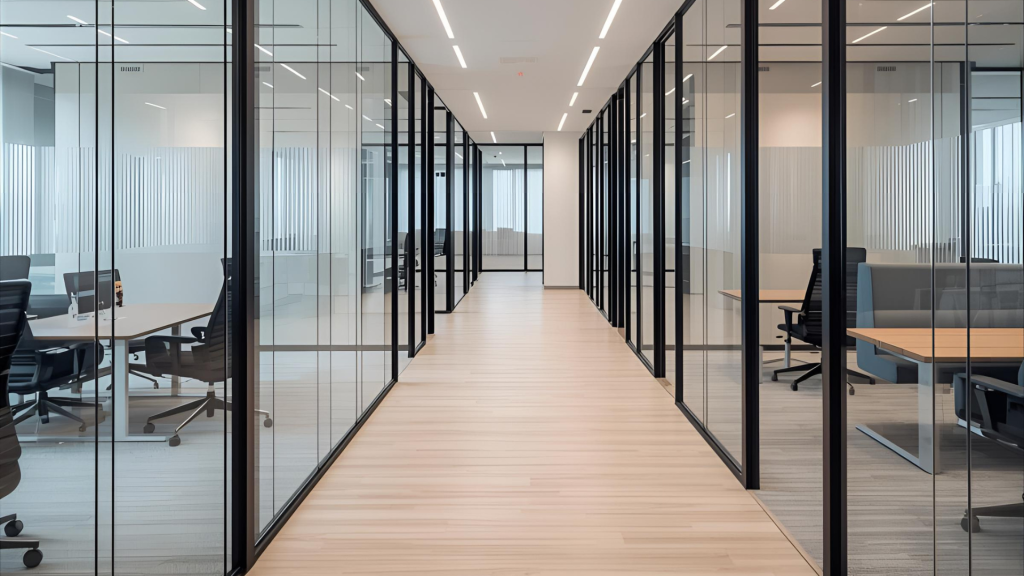In the demanding corporate arena of Singapore, the most successful companies understand a fundamental truth: every element of their business is a brand touchpoint. While digital footprints and marketing campaigns are crucial, the most immersive and impactful brand experience happens within a company’s own four walls. This is the domain of branded commercial interior design in Singapore—the strategic discipline of translating a company’s core identity, values, and mission into a tangible, three-dimensional environment.
This is a critical shift in perspective. An office is not merely an operational expense or a collection of desks and chairs. It is a living, breathing asset. It is a powerful tool for storytelling, a magnet for talent, and a silent, persuasive partner in every client meeting.
The goal is to move beyond generic corporate aesthetics and achieve a perfect integration of space and strategy. Here’s how this powerful synergy is built.
1. More Than a Logo: The Brand Story in Three Dimensions
A brand is a story, and your commercial interior is the most immersive stage on which to tell it. This goes far beyond placing a logo in the reception. It’s about embedding the brand’s narrative into the very material and flow of the space.
- Material Language: The materials chosen are your brand’s vocabulary. A fintech startup disrupting the industry might use raw concrete, exposed ducting, and vibrant splashes of colour to communicate agility and innovation. A prestigious wealth management firm, by contrast, would use the quiet authority of natural stone, rich walnut veneers, and brushed bronze to convey stability, heritage, and trust.
- The First Impression: The journey from the lift lobby to the reception is the prologue to your brand story. The design of this space—the quality of the lighting, the feel of the door handle, the sightlines into the office—immediately sets the tone and communicates a powerful message about your company’s attention to detail and professionalism.
2. Culture Made Concrete: Designing for Your People
Your most important audience is internal. A branded interior is a physical manifestation of your company culture, and it can be engineered to foster the very behaviours you want to encourage. It answers the question: “What does it feel like to work here?”
- Fostering Collaboration (or Focus): An open, energetic hub with flexible furniture, writable surfaces, and integrated tech sends a clear message that collaboration and innovation are prized. Conversely, the inclusion of acoustically sealed pods, private booths, and library-like quiet zones shows that the company values deep, focused work. A sophisticated design provides a hybrid of both.
- Winning the War for Talent: In a competitive job market, your office is a key differentiator. A thoughtfully designed space that prioritizes employee well-being—with biophilic elements (natural light and plants), ergonomic furniture, and high-quality social spaces—demonstrates that the company invests in its people. It becomes a tangible reason for top talent to join and, more importantly, to stay.
3. Choreographing the Client Journey
When a client or partner visits your office, the space itself is part of the pitch. A well-designed interior builds subconscious trust and reinforces brand confidence long before the presentation begins.
- From Welcome to Boardroom: The journey a client takes should be carefully choreographed. The design should guide them intuitively, with each space—from the impressive reception to the comfortable waiting lounge to the tech-enabled boardroom—building on the last to create a seamless and professional experience.
- Communicating Competence: A space that is organized, aesthetically pleasing, and technologically seamless communicates competence and success. It shows that your company is detail-oriented and invests in quality, which clients will infer extends to the products or services you provide.
The Strategic Imperative of a Turnkey Partner
True integration of space and strategy is a complex, holistic process. It cannot be achieved with a fragmented approach of hiring separate designers and contractors who may not share a unified vision. This is where the turnkey design & build model is essential.
A single, integrated partner is responsible for the entire journey, from deep-diving into your brand strategy to the final, flawless execution of the build.
- A Unified Vision: The design and construction teams work as one, ensuring the strategic brand concepts are perfectly translated into the physical reality without anything being “lost in translation.”
- Strategic Execution: The firm acts as a strategic partner, making design and construction decisions that align with your business objectives, your budget, and your timeline.
Your commercial interior is not passive real estate. It is an active participant in your business. It is a strategic tool for building your brand, reinforcing your culture, and driving your success. It is where your brand lives, breathes, and builds its future.

